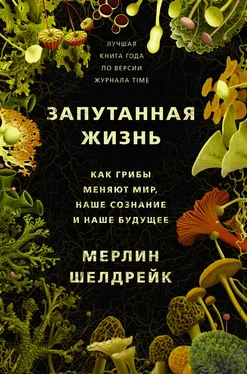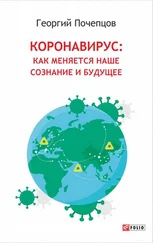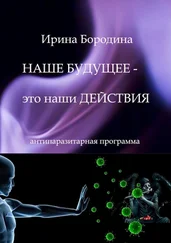Achatz M, Rillig MC. 2014. Arbuscular mycorrhizal fungal hyphae enhance transport of the allelochemical juglone in the field. Soil Biology and Biochemistry 78: 76–82.
Adachi K, Chiba K. 2007. FTY720 story. Its discovery and the following accelerated development of sphingosine 1-phosphate receptor agonists as immunomodulators based on reverse pharmacology. Perspectives in Medicinal Chemistry 1: 11–23.
Adamatzky A. 2016. Advances in Physarum Machines . Springer International Publishing.
Adamatzky A. 2019. A brief history of liquid computers. Philosophical Transactions of the Royal Society B 374: 20180372.
Adamatzky A. 2018a. On spiking behaviour of oyster fungi Pleurotus djamor. Scientific Reports 8: 7873.
Adamatzky A. 2018b. Towards fungal computer. Journal of the Royal Society Interface Focus 8: 20180029.
Ahmadjian V. 1995. Lichens are more important than you think. BioScience 45: 123.
Ahmadjian V, Heikkilä H. 1970. The culture and synthesis of Endocarpon pusillum and Staurothele clopima. The Lichenologist 4: 259–67.
Ainsworth GC. 1976. Introduction to the History of Mycology . Cambridge, UK: Cambridge University Press.
Albert R, Jeong H, Barabási A-L. 2000. Error and attack tolerance of complex networks. Nature 406: 378–82.
Alberti S. 2015. Don’t go with the cytoplasmic flow. Developmental Cell 34: 381–82.
Alim K. 2018. Fluid flows shaping organism morphology. Philosophical Transactions of the Royal Society B 373: 20170112.
Alim K, Andrew N, Pringle A, Brenner MP. 2017. Mechanism of signal propagation in Physarum polycephalum. Proceedings of the National Academy of Sciences 114: 5136–141.
Allaway W, Ashford A. 2001. Motile tubular vacuoles in extramatrical mycelium and sheath hyphae of ectomycorrhizal systems. Protoplasma 215: 218–25.
Allen J, Arthur J. 2005. “Ethnomycology and Distribution of Psilocybin Mushrooms.” In Sacred Mushroom of Visions: Teonanacatl . Metzner R, ed. Rochester, VT: Park Street Press, pp. 49–68.
Alpert C. 2011. Unraveling the Mysteries of the Canadian Whiskey Fungus. Wired : www.wired.com/2011/05/ff-angelsshare/ [accessed October 29, 2019].
Alpi A, Amrhein N, Bertl A, Blatt MR, Blumwald E, Cervone F, Dainty J, Michelis M, Epstein E, Galston AW, et al. 2007. Plant neurobiology: no brain, no gain? Trends in Plant Science 12: 135–36.
Aly A, Debbab A, Proksch P. 2011. Fungal endophytes: unique plant inhabitants with great promises. Applied Microbiology and Biotechnology 90: 1829–845.
Alzarhani KA, Clark DR, Underwood GJ, Ford H, Cotton AT, Dumbrell AJ. 2019. Are drivers of root-associated fungal community structure context specific? The ISME Journal 13: 1330–344.
Anderson JB, Bruhn JN, Kasimer D, Wang H, Rodrigue N, Smith ML. 2018. Clonal evolution and genome stability in a 2500-year-old fungal individual. Proceedings of the Royal Society B 285: 20182233.
Andersen SB, Gerritsma S, Yusah KM, Mayntz D, Hywel Jones NL, Billen J, Boomsma JJ, Hughes DP. 2009. The life of a dead ant: the expression of an adaptive extended phenotype. The American Naturalist 174: 424–33.
Araldi-Brondolo SJ, Spraker J, Shaffer JP, Woytenko EH, Baltrus DA, Gallery RE, Arnold EA. 2017. Bacterial endosymbionts: master modulators of fungal phenotypes. Microbiology spectrum 5: FUNK-0056-2016.
Arnaud-Haond S, Duarte CM, Diaz-Almela E, Marbà N, Sintes T, Serrão EA. 2012. Implications of extreme life span in clonal organisms: millenary clones in meadows of the threatened seagrass Posidonia oceanica. PLOS ONE 7: e30454.
Arnold EA, Mejía L, Kyllo D, Rojas EI, Maynard Z, Robbins N, Herre E. 2003. Fungal endophytes limit pathogen damage in a tropical tree. Proceedings of the National Academy of Sciences 100: 15649–654.
Arnold EA, Miadlikowska J, Higgins LK, Sarvate SD, Gugger P, Way A, Hofstetter V, Kauff F, Lutzoni F. 2009. A phylogenetic estimation of trophic transition networks for ascomycetous fungi: are lichens cradles of symbiotrophic fungal diversification? Systematic Biology 58: 283–97.
Arsenault C. 2014. Only 60 Years of Farming Left if Soil Degradation Continues. Scientific American : www.scientificamerican.com/article/only-60-years-of-farming-left-if-soil-degradation-continues/ [accessed October 29, 2019].
Aschenbrenner IA, Cernava T, Berg G, Grube M. 2016. Understanding microbial multi-species symbioses. Frontiers in Microbiology 7: 180.
Asenova E, Lin H-Y, Fu E, Nicolau DV, Nicolau DV. 2016. Optimal fungal space searching algorithms. IEEE Transactions on NanoBioscience 15: 613–18.
Ashford AE, Allaway WG. 2002. The role of the motile tubular vacuole system in mycorrhizal fungi. Plant and Soil 244: 177–87.
Averill C, Dietze MC, Bhatnagar JM. 2018. Continental-scale nitrogen pollution is shifting forest mycorrhizal associations and soil carbon stocks. Global Change Biology 24: 4544–553.
Awan AR, Winter JM, Turner D, Shaw WM, Suz LM, Bradshaw AJ, Ellis T, Dentinger B. 2018. Convergent evolution of psilocybin biosynthesis by psychedelic mushrooms. bioRxiv : 374199.
Babikova Z, Gilbert L, Bruce TJ, Birkett M, Caulfield JC, Woodcock C, Pickett JA, Johnson D. 2013. Underground signals carried through common mycelial networks warn neighbouring plants of aphid attack. Ecology Letters 16: 835–43.
Bachelot B, Uriarte M, McGuire KL, Thompson J, Zimmerman J. 2017. Arbuscular mycorrhizal fungal diversity and natural enemies promote coexistence of tropical tree species. Ecology 98: 712–20.
Bader MK-F, Leuzinger S. 2019. Hydraulic coupling of a leafless kauri tree remnant to conspecific hosts. iScience 19: 1238-43.
Bahn Y-S, Xue C, Idnurm A, Rutherford JC, Heitman J, Cardenas ME. 2007. Sensing the environment: lessons from fungi. Nature Reviews Microbiology 5: 57–69.
Bain N, Bartolo D. 2019. Dynamic response and hydrodynamics of polarized crowds. Science 363: 46–49.
Ball P. 2019. How to Grow a Human . London, UK: William Collins.
Banerjee S, Schlaeppi K, van der Heijden MG. 2018. Keystone taxa as drivers of microbiome structure and functioning. Nature Reviews Microbiology 16: 567–76.
Banerjee S, Walder F, Büchi L, Meyer M, Held AY, Gattinger A, Keller T, Charles R, van der Heijden MG. 2019. Agricultural intensification reduces microbial network complexity and the abundance of keystone taxa in roots. The ISME Journal 13: 1722–736.
Barabási A-L. 2014. Linked: How Everything Is Connected to Everything Else and What It Means for Business, Science, and Everyday Life . New York, NY: Basic Books.
Barabási A-L. 2001. The Physics of the Web. Physics World 14: 33–38. physicsworld.com/a/the-physics-of-the-web/ [accessed October 29, 2019].
Barabási A-L, Albert R. 1999. Emergence of scaling in random networks. Science 286: 509–12.
Barbey AK. 2018. Network neuroscience theory of human intelligence. Trends in Cognitive Sciences 22: 8–20.
Bar-On YM, Phillips R, Milo R. 2018. The biomass distribution on Earth. Proceedings of the National Academy of Sciences 115: 6506–511.
Barto KE, Hilker M, Müller F, Mohney BK, Weidenhamer JD, Rillig MC. 2011. The fungal fast lane: common mycorrhizal networks extend bioactive zones of allelochemicals in soils. PLOS ONE 6: e27195.
Barto KE, Weidenhamer JD, Cipollini D, Rillig MC. 2012. Fungal superhighways: do common mycorrhizal networks enhance below ground communication? Trends in Plant Science 17: 633–37.
Читать дальше
Конец ознакомительного отрывка
Купить книгу










